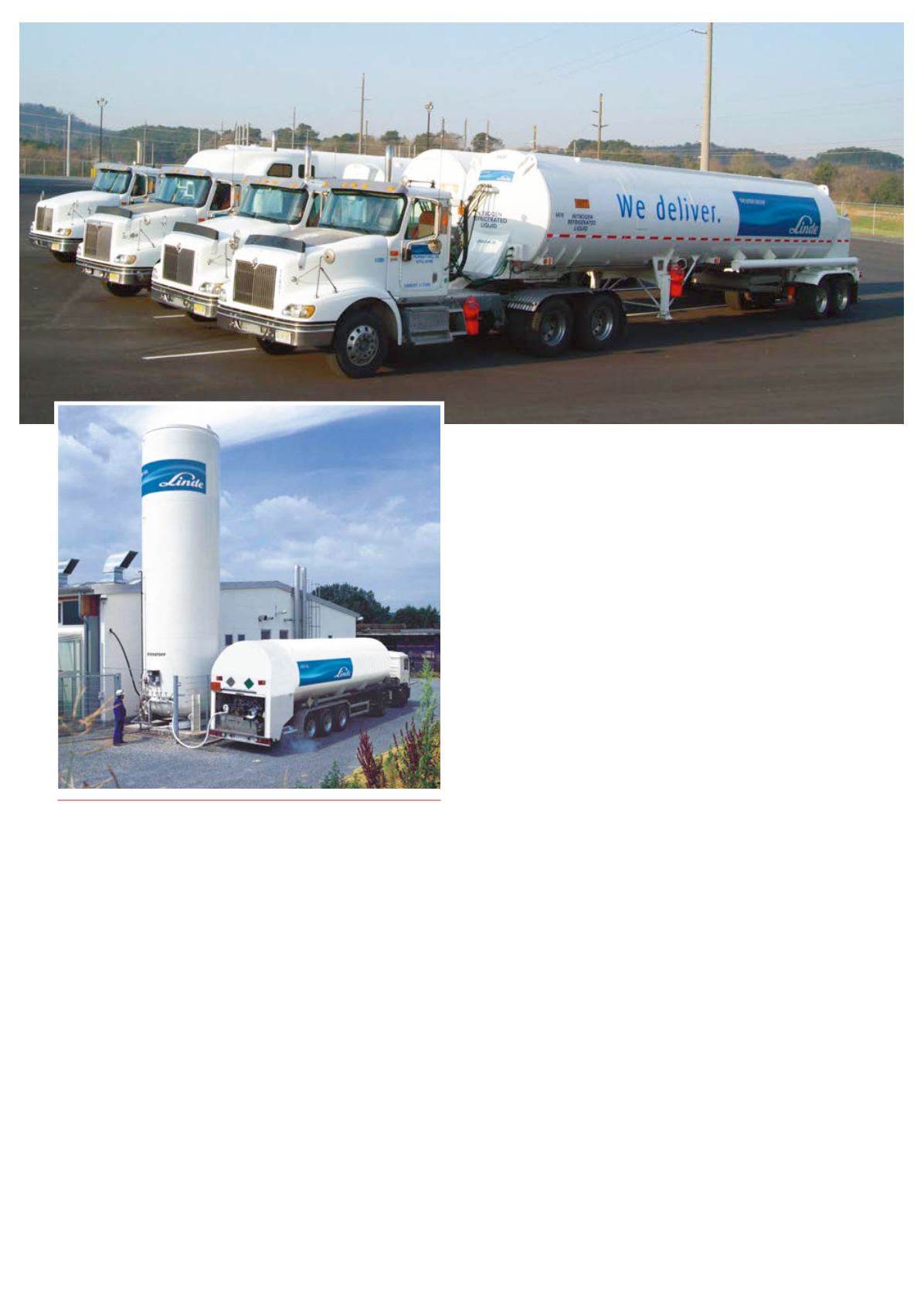
56 |
OilfieldTechnology
February
2014
viscositytosuspendandcapturetherequiredparticles.Creatingthe
requiredextraction fluid formulation involvessignificantchemistryand
isassociatedwiththeuseofmassiveamountsofwater.
Typically, lowpermeabilitysourcerockbecomesan
economicallyproductivewellbypropagating fractures inarock layer
usingthe fluid inahighlypressurisedstate, incombinationwitha
proppant (typicallysand) toholdthe formationopen forthereleaseof
petroleum,naturalgas (includingshalegas, tightgasandcoalseamgas)
orothersubstances forextraction.Some fractures formnaturally–
certainveinsordikesareexamplesof this–andcancreateconduits
alongwhichgasandpetroleum fromsourcerocksmaymigrateto
reservoirrocks.
Shalegas, foundtrappedwithinshale formations,hasbecomean
increasingly importantsourceofnaturalgas intheUSAsincethestart
of the21
st
century,and interesthasspreadtopotentialgasshales in
therestof theworld. In2000,shalegasprovidedonly1%ofUSnatural
gasproduction,butby2010 itwasover20%andtheUSgovernment’s
Energy InformationAdministrationpredictsthatby2035,46%of the
Figure2.
LindeGasproducesN
2
andCO
2
in liquidformatfacilitiescloseto
hydraulicfracturingsitesanddeliversthesegases inroadtankers.
Figure3.
Studies indicatethat, fromaneconomicperspective,hydraulic
fracturingwithsolutionsenergisedbyCO
2
orN
2
canachievesignificantly
morehydrocarbonrecoverythannon‑energisedapproaches.
UnitedStates’naturalgassupplywillcome fromshalegas.Some
analystsexpectthatshalegaswillalsogreatlyexpandworldenergy
supply.
Asa fine‑grained, sedimentary rock, shale isheterogeneous–no
twoarealikeand theyvaryaerially, verticallyandalong the
wellbore,with in‑situstressesandgeological variances.Shale iseasily
breakable intoparallel layers.Withpermeability in thenanodarcy
range, it issoftyetdoesnotdisintegratewhenwet. Instead itbecomes
finegrainsiltandmud.Toextractembeddedoilandgas, shalemustbe
fractured.
Thedevelopmentofhydraulic fracturinghas thereforemade it
possible to tap into thisgas, leading toashalegas revolution that is
seeingwellsof thousandsofmetres in lengthbeingcreated.Avertical
well isexcavated tohundreds,andeven thousandsofmetresbelow the
surfaceand thenadvancedhorizontally, following theconfigurationof
the rock formation.Although these fracturesareenormously long, they
areonlymillimetres inwidth,which issufficient toopenup the rock
andextract thegas.
Theextraction fluid isthenpumpeddownthewellandthepressure
thiscreatescausesthesurroundingrocktocrack,or fracture.The fluid
flows intothecracksandwhenthepumpingpressure isrelieved, the
waterdispersesand leavesathin layerofproppant,asandorceramic
material isusedtokeepthe fractures ‘propped’open.This layeractsasa
conduittoallowthenaturalgastoescape fromtheshale formationsand
flowtothewell forrecovery.
Otherunconventional reservoirs includetightsandsandcoalbed
methane.Tightsandsarehardrock, limestone,sandorsandstone
formationswith lowverticalpermeability, intheMicroDarcyrange.They
are laminatedstructuresandtherecanbenosignificantgas flowwithout
fractures–whethernaturallyoccurringor induced.Coalbedmethane is
foundwithincoaldeposits located inoraroundcoalseams,oftennear
theEarth’ssurface.Natural fracturesareoften filledwithwaterand
absorbedgas,makingwaterremovalakeyextractionchallenge.
Firstuse
The firstuseofhydraulic fracturinggoesbacktothe late1940s,but it
wasonly in1998thatmodernhydraulic fracturingtechnology, referred
toas ‘horizontalslickwater fracturing’,madetheextractionofshale
gaseconomicallyviable.Thispioneeringtechnologywas firstused in
theBarnettShalegeological formation inTexas.Theenergy fromthe
injectionofahighlypressurisedhydraulic fracturing fluidcreatesnew


